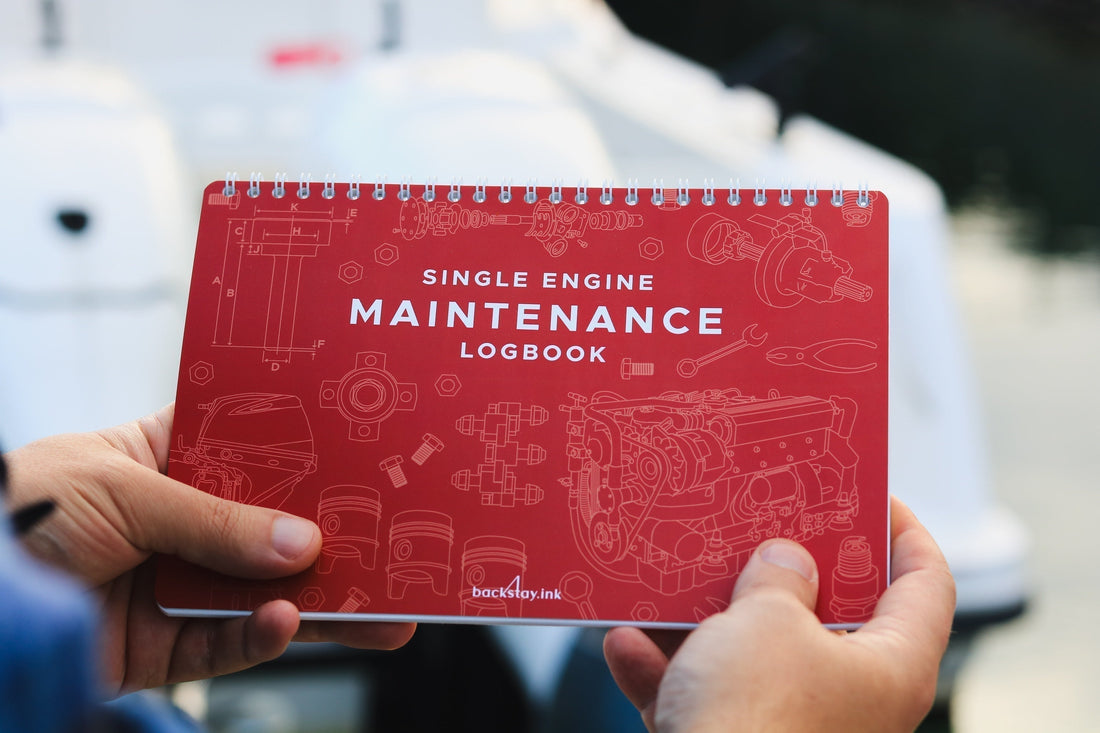If you own a single-engine boat, your engine is your lifeline. It powers your adventures, gets you home safely, and can make or break your time on the water. But here’s a truth many boaters learn the hard way: neglecting engine maintenance is expensive—and sometimes dangerous.
That’s why seasoned mariners and marine technicians alike rely on one simple, powerful tool: an engine maintenance logbook.
Why You Should Track Your Boat’s Engine Maintenance
Boat engines face tough conditions—saltwater exposure, vibration, fuel variability, and more. Staying ahead of potential problems is critical, and keeping detailed records is a key part of that.
Here’s what proper maintenance tracking can help you do:
- Spot wear-and-tear early before it becomes a failure
- Ensure you follow the manufacturer’s recommended service schedule
- Keep fuel usage efficient and measurable
- Make seasonal tasks like winterizing easier and more thorough
- Increase resale value with documented proof of good maintenance
In short: a logbook isn’t just paper. It’s peace of mind.

What Makes a Great Marine Engine Logbook?
Not all notebooks—or even generic maintenance logs—are built for boats. At Backstay, we designed our Single Engine Maintenance Logbook specifically for marine environments and real-world boat owners.
Here’s what sets it apart:
- Waterproof, Grease-Resistant Paper
Made with Rite in the Rain® all-weather paper, it resists water, oil, and abuse from the engine room.
- Smartly Organized Layout
Includes sections for maintenance logs, fuel tracking, spare parts inventory, seasonal checklists, and more.
- Designed by Certified Marine Technicians
Developed with input from ABYC- and NMEA-certified professionals who teach offshore maintenance for a living.
- Built for Longevity
With 80 pages and space for over 900 entries, one book can serve you for years of boating.
It’s like having a maintenance manual and log combined—customized for single engine boats.

How to Use an Engine Maintenance Logbook
Whether you’re running a diesel or gasoline engine, here’s how to get the most from your logbook:
- Start With the Checklist – Review recommended tasks based on engine hours.
- Log Every Service – Record oil changes, impeller swaps, belt inspections, and more with date, engine hours, and notes.
- Track Fuel Use – Watch your fuel burn rate to catch inefficiencies or leaks early.
- Prepare for the Seasons – Use the winterizing and commissioning sections to make transitions easier and stress-free.
- Store It Near the Engine – Thanks to the waterproof design, you can keep it in the engine room, toolbox, or nav station.
The Bottom Line: Fewer Surprises, More Confidence
A maintenance logbook isn’t about paperwork—it’s about reliability. The Backstay Single Engine Maintenance Logbook is designed to help you stay organized, reduce mechanical surprises, and enjoy more time out on the water.
Whether you’re prepping for a long passage or weekend cruising, it’s one of the most valuable tools you can bring aboard.
🔗 Ready to Get Organized?
Shop the Single Engine Maintenance Logbook →


